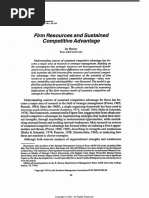Download Free Luis Cabral Introduction Industrial Organization Pdf
Contents • • • • • Education [ ] Cabral received a B.S. In Economics from the in 1983, an M.Sc.


Enter your mobile number or email address below and we'll send you a link to download the free. By Luis Cabral. Introduction to Industrial Organization.
In Economics from in 1985, and a Ph.D. In Economics from in 1989, working under the supervision of.
Career [ ] Cabral is the Paganelli-Bull Professor of Economics and International Business at 's. He previously taught at,,, and. He has published over 40 papers in specialized economics journals and is the author of Introduction to Industrial Organization (MIT Press, 2000). Cabral served as Managing Editor of the Journal of Industrial Economics from 1999-2003. He is currently Co-Editor of the Journal of Economics and Management Strategy and a member of the Advisory Board of the International Journal of Industrial Organization. Honors [ ] Cabral was President of the European Association for Research in Industrial Economics from 2009-2011.
References [ ].
Solutions to Exercises From Introduction to Industrial 1.1 ¤ Solutions to Exercises From Introduction to Industrial Organization' Lu¶³s Cabral 1 November 14, 2001 Empirical evidence from a sample of more than 600 U.K. ¯rms indicates that, controlling for the quantity of inputs (that is, taking in to account the quantity of inputs), ¯rm output is increasing in the number of competi tors and decreasing in market share and industry concentration. 2 How do these results relate to the ideas presented in the chapter? Datalogic Skorpio X3 Usb Driver. Solution: In Section 1.2, we argued that one of the implications of market power is the decline of productive e±ciency. Controlling for input levels, the level of output is a measure of productive e±ciency. The number of competi tors and the degree of concentration are measures of the degree of competition (concentration is an inverse indica tor). The empirical from U.K.
¯rms is therefore consistent with the view presented in the text. Evidence to the third explana tory variable (market share), see the discussion in Chapter 9. As 2.1 A price-taking ¯rm selling in a market with a price greater than the ¯rm's average cost should increase its output level.' In a competitive market, ¯rms are price takers; optimal output is such that price Solution: marginal cost (or marginal revenue equals marginal cost).
It is perfectly possible that equals be equal to marginal cost and greater than average cost. In fact, if price is greater price the minimum of average cost, then the optimal output is such that price is greater than than average cost. In summary, the sentence is wrong. I am grateful to Critian Dezso (New York University) for excellent assistance in preparing these solutions. Nickell, Competition and Corporate Performance,' Journal of Political Economy 104 2 (1996), 724{746.